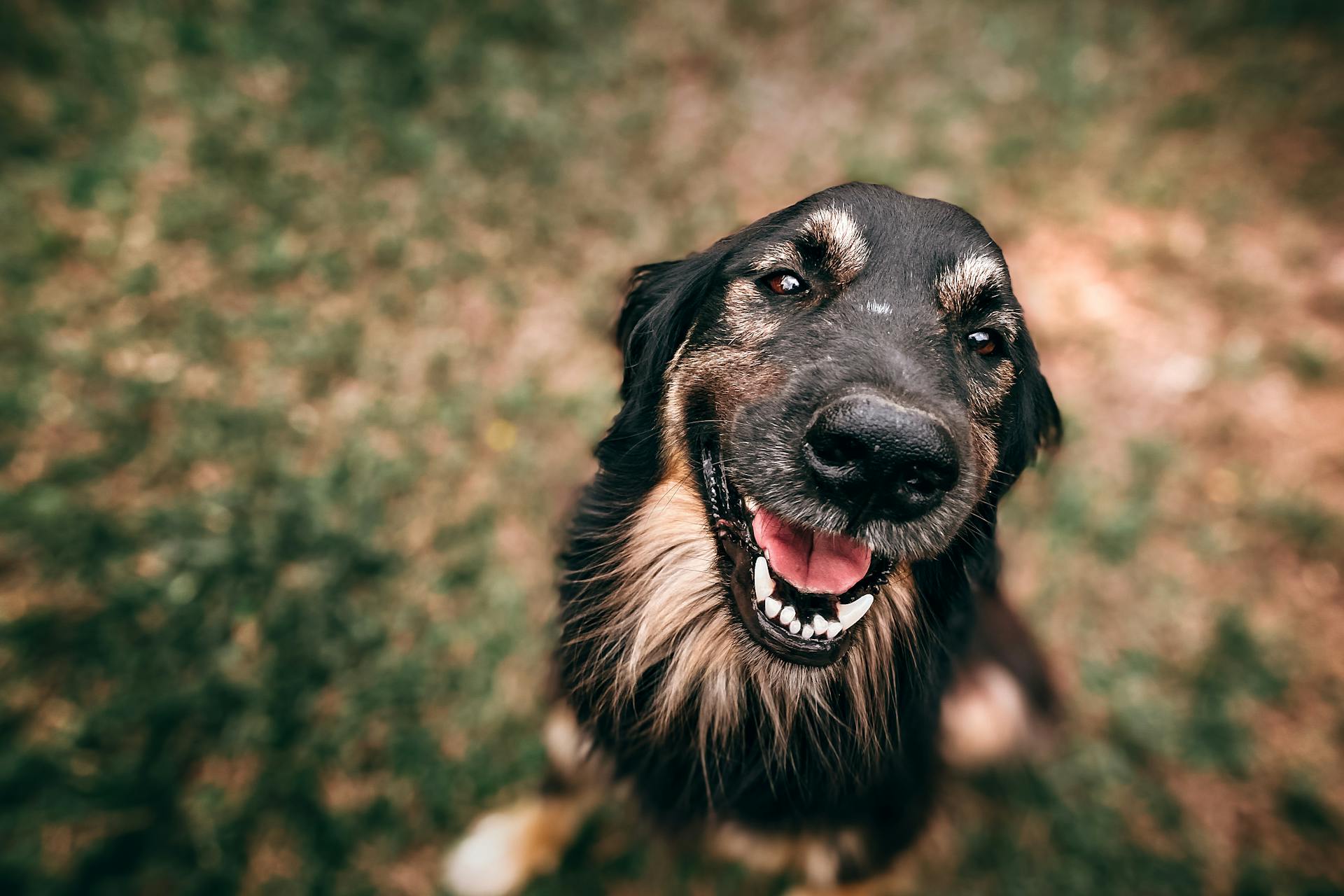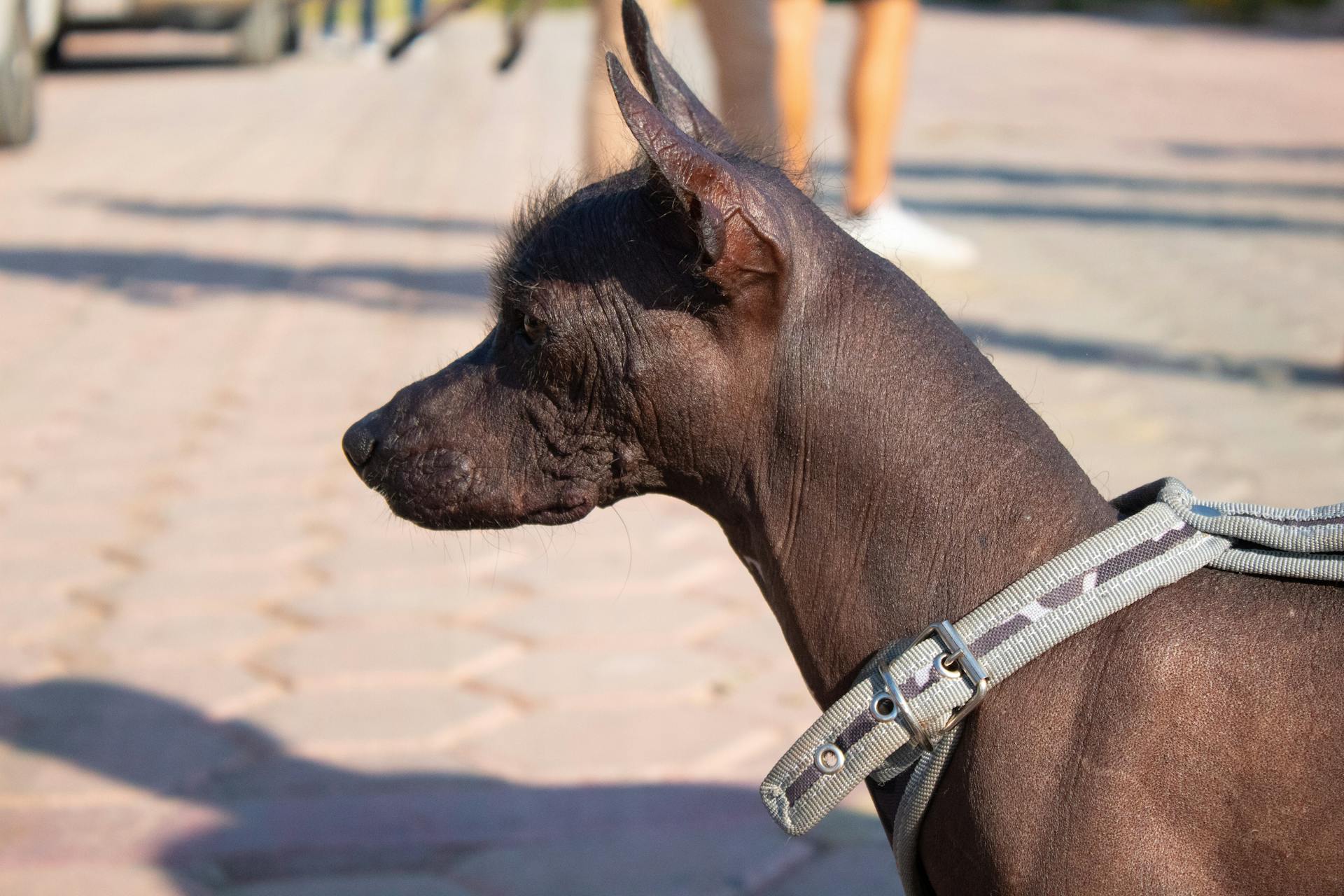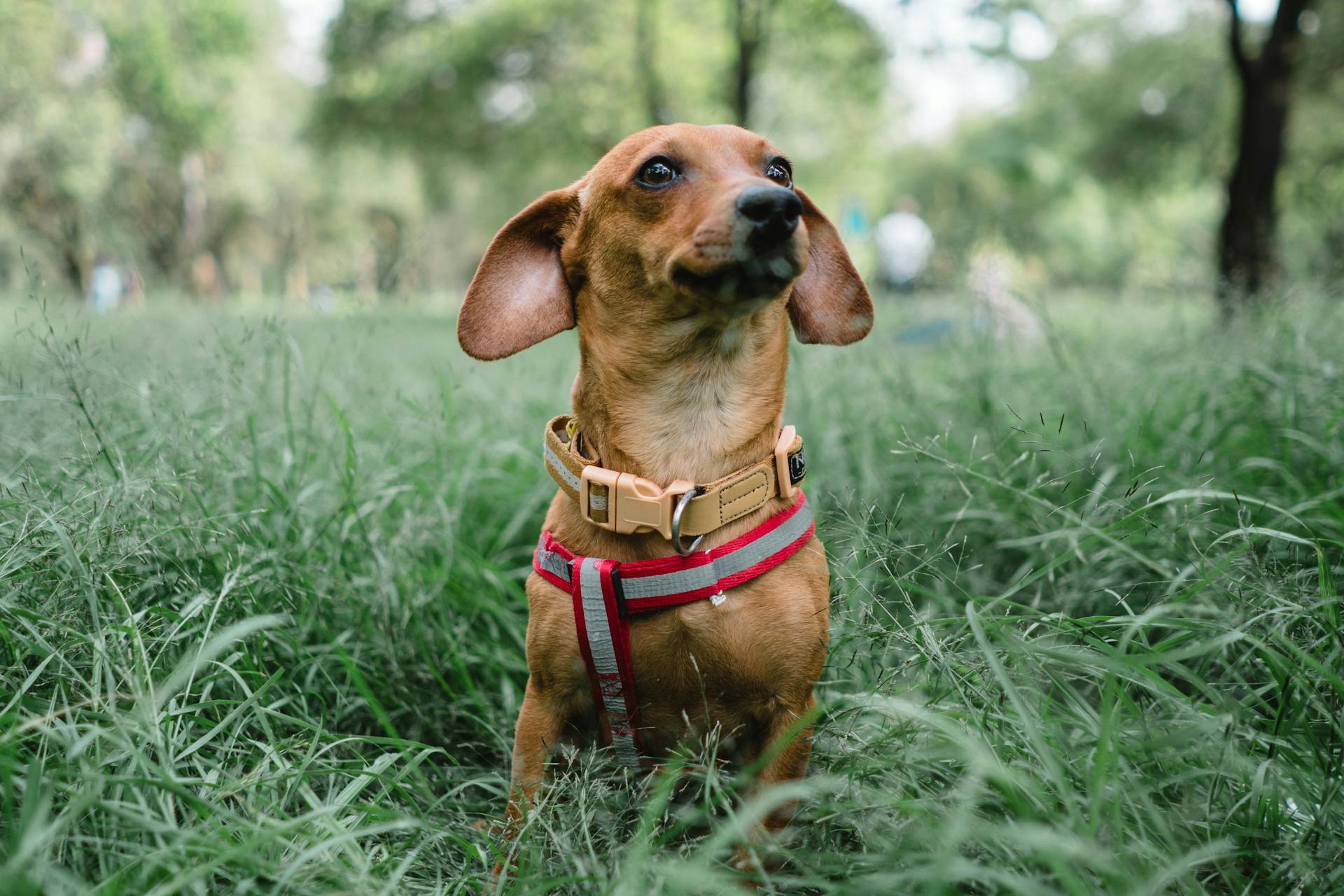
Dogs are born with a strong prey drive, which is their natural instinct to chase and catch small animals. This drive is deeply ingrained and can be triggered by a variety of stimuli.
Prey drive is not the same as aggression, although they can sometimes be confused with each other. In fact, a high prey drive can actually help to reduce aggression in dogs.
Dogs with high prey drives often exhibit behaviors such as stalking, chasing, and pouncing, even when there is no actual prey present. This can be seen in breeds such as Greyhounds and Whippets, which were bred for their speed and hunting ability.
A balanced dog is one that has a strong prey drive, but also knows when to calm down and relax. This balance is crucial for a happy and healthy dog.
For more insights, see: Do German Shepherds Have a High Prey Drive
Understanding Prey Drive and Aggression
Prey drive is not just a specific behavior, but a collection of behaviors that happen in a certain context. This means that every dog has some level of prey drive, but some breeds are more prone to it due to their history of being bred for hunting.
Certain breeds, such as the rat terrier and saluki, have been specifically bred to chase and hunt, making them more likely to exhibit prey drive behaviors. If you're considering bringing one of these breeds into your home, it's essential to do extensive research and preparation.
Prey drive behaviors can be mistaken for play, but they can quickly escalate into predatory aggression. Signs of predatory aggression include a dog becoming excited and difficult to distract, shaking or trembling, and a fixed stare.
Here are some common signs of predatory aggression:
- Excitement and difficulty distracting the dog
- Shaking or trembling
- Fixed stare
- Neck arched, tail up, stiff stance
- Trying to encourage the target to move, potentially with rough behavior
- Vocalizing if thwarted from obtaining access to the target
If you see any of these signs, it's crucial to take control and remove your dog from the situation immediately. This can quickly escalate, and it's better to err on the side of caution.
Aggression
Aggression is a complex trait that's often misunderstood, and it's essential to distinguish it from prey drive. Aggression is not about being overly competitive or assertive, but rather about being protective of oneself or one's resources.
Aggression can be a natural response to perceived threats, and it's not uncommon for dogs to exhibit aggressive behavior when they feel their space or family is being invaded.
In fact, some breeds are more prone to aggression due to their historical purpose, such as guarding breeds.
Preventing Predatory Behavior
Understanding the difference between prey drive and aggression is crucial in preventing predatory behavior.
Prey drive is an instinctual response to chase and catch prey, whereas aggression is a more intense and often destructive response to perceived threats or stressors.
To prevent predatory behavior, it's essential to recognize the triggers for prey drive, such as the sight of small animals or the sound of movement.
Predatory Drift: What Is It? How to Avoid It?
Predatory drift occurs when a person's behavior becomes increasingly aggressive and exploitative over time, often due to a lack of accountability and unchecked power dynamics.
This phenomenon can be particularly damaging in situations where there is a power imbalance, such as in business or academia, where a person in a position of authority may take advantage of their position to exploit others.
Research has shown that predatory drift can be fueled by a sense of entitlement and a lack of empathy for others.
If this caught your attention, see: Can a Dog Sense a Bad Person
In fact, studies have found that individuals who exhibit predatory behavior often have difficulty understanding and relating to the perspectives and emotions of others.
To avoid predatory drift, it's essential to establish clear boundaries and expectations from the outset, as this can help prevent power imbalances from developing in the first place.
By prioritizing transparency, accountability, and mutual respect, we can create environments that are less conducive to predatory behavior.
Why to Avoid Training Defense Drive First
Training a defense drive first can be counterproductive. It can actually increase the likelihood of predatory behavior in dogs.
By focusing on a dog's defensive instincts, you may inadvertently create a dog that's more reactive and less likely to listen to commands. This is because a dog's defensive drive is often more powerful than its prey drive.
In fact, research has shown that dogs that are over-trained in defensive behaviors tend to have lower impulse control and are more prone to aggression.
A dog's defensive drive is closely linked to its fear and anxiety responses, which can be triggered by a variety of stimuli.
Frequently Asked Questions
What is the difference between predation and aggression?
Predation and aggression in dogs are distinct behaviors, with predation decreasing distance to the target and aggression increasing distance. Understanding this key difference is crucial for recognizing and addressing unwanted behaviors in canine companions.
How to tell if your dog is aggressive or playing?
Check for loose body language and relaxed movements, as growls during play are typically accompanied by these signs. However, a lip snarl or uncomfortable muzzle movements may indicate underlying aggression
Sources
- https://www.nsnews.com/living/understand-the-difference-between-aggression-and-prey-drive-2997116
- https://www.dailypaws.com/dogs-puppies/dog-behavior/dog-psychology/what-does-it-mean-when-a-dog-has-strong-prey-drive
- http://greyhoundequality.org/care_article1.html
- https://www.dogtrainingfresno.com/predatory-drift-what-is-it-how-to-avoid-it/
- https://leerburg.com/def-frst.htm
Featured Images: pexels.com


